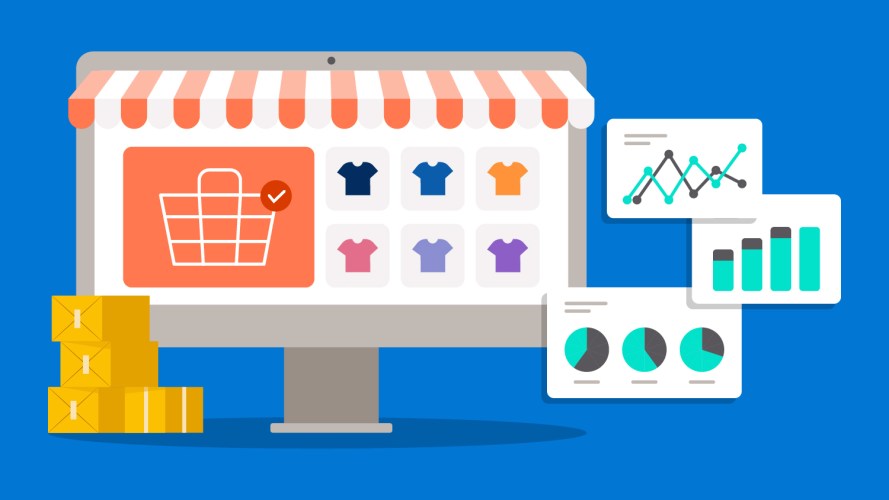5 B2B Commerce Trends Already Emerging in 2024



These B2B commerce trends will change the wave of business in 2024. Here’s what we learned from the most recent research, and what you can do to ride the tide.
B2B companies expect more than half their revenue to come from digital channels over the next two years. That’s a big jump — last year, only 30% of B2B revenue was digitally-driven. What are businesses doing to adapt and drive revenue in a mostly digital market? We asked 2,700 commerce leaders how they plan to navigate changing customer behaviors, sky-high expectations, and the rise of new technology (ahem, generative AI).
Here’s what we uncovered and the B2B commerce trends that are already emerging.
Get insights to move your business forward
Learn how leaders are finding success in a changing market.



1. More B2B companies will invest in headless commerce
Speed. Customization. Flexibility. Every B2B company could use more. But the complexity of large catalogs and disparate pricing models make it difficult to introduce new channels, personalize buying experiences, and add new functionalities quickly with legacy platforms.
Fortunately, headless commerce and composable capabilities make these goals much easier to achieve. How? Headless separates the front end and back end of an ecommerce application and offers businesses the freedom of expression to build whatever and however they want. At a time when 63% of business buyers say most customer experiences fall short of what they know is possible, headless offers a promising solution.
With traditional monolithic architectures, development cycles were sluggish and it could take months to get new commerce experiences to market. Teams would spend valuable time and resources reconfiguring the front and back end any time a new feature or update was needed. With headless, you gain flexibility and the freedom to quickly innovate, update, and optimize your experiences.
Headless offers the best capability to sell, quote, and price nearly every product in every channel. According to one survey, 46% of IT teams have implemented composable architecture, and 43% plan to.
2. AI will increase productivity
Almost half (45%) of B2B organizations are experimenting with AI, and 32% have fully implemented it. Already, businesses are seeing big improvements in employee productivity and operational efficiency. Thanks to generative AI tools and automation, tasks that once took days or weeks to complete now take just hours or minutes.
AI also has the power to significantly improve areas of B2B digital transformation that were once sticking points. For example, large volumes of technical, often incomplete product data (like product descriptions, visual depictions, and configurations) have traditionally required massive investments for clean up and ongoing management. And that’s before accounting for factors like localization for different geographical markets. Considering that 64% of B2B organizations sell internationally, it’s critical that businesses gain efficiency when it comes to catalog content creation and management. Enter: AI.
AI can drastically reduce the amount of manual effort involved in these processes. With generative AI, companies can finally present more of their catalog digitally — and many will be able to take the leap into even more robust product content, such as visual buying experiences. For example, imagine a technician servicing agricultural equipment, augmented by AI. This would make it possible to find a replacement part using a visual 3D image, significantly reducing time for service. The same visualizations can also be used by customers to self-diagnose problems and automate the fix themselves. With the advent of AI, these use cases are finally within reach.
AI can also help sales and marketing teams create personalized, dynamic messaging and promotions for each buyer based on purchase and product search history, cadence of reorders, and more. This frees up valuable time for your sales teams, allowing them to put their energy into more strategic tasks that make more of an impact on your bottom line. Commerce professionals using AI estimate it saves them an average of 6.4 hours per week.
Agility. AI. Easy-to-use tools.
See why Salesforce is a leader in B2B digital commerce.



3. Data management will become a top priority
Since AI is powered by data, B2B companies must prioritize improving data quality and management if they want to realize AI’s full potential. And that’s no easy task: 68% of B2Bs say poor data integration and harmonization are challenges keeping them from AI adoption and maximization. But the juice is worth the squeeze: Sales leaders list data accuracy as one of the top tactics to drive growth.
Want to get your data in working order? It all starts with performing an audit to determine its accuracy, completeness, consistency, timeliness, and relevance. To improve data quality, make sure you have a data management platform that can unify and harmonize your data and a connected commerce platform that helps you put it all to use by way of stellar shopping experiences. These tools will give you a more holistic view of customer profiles, shopping behavior, and business activity so your teams have a shared, accurate view of useful information.
With a commerce platform connected to customer data, you can collect in-the-moment insights about your buyers and interact with them in ways that show you understand their unique needs and preferences. This has never been more critical, especially at a time when 85% of business buyers say customer experiences should be better considering all the data companies collect.
Accurate, real-time, connected data is an invaluable business asset, especially in the era of AI.
4. Embedded commerce is the easy button for starting digital transformation
Long and complex purchasing processes can be a significant hurdle for B2B companies. To enhance the buyer experience, shorten the sales cycle, and boost revenue, the bulk of organizations now incorporate transaction functionality into sales, service, and marketing touchpoints. This is what’s known as “embedded commerce” — and it has a substantial impact on companies’ top lines. In fact, B2B organizations with embedded commerce capabilities see 46% of their overall transactions occur through these channels. Here’s how businesses are using this innovative technology to increase sales:
- Turn service centers into revenue generators: With embedded commerce, service agents can go beyond resolving issues and answering questions. They can now place orders on behalf of buyers. With a single customer profile, your agents can manage returns, exchanges, and place orders on behalf of buyers right in the service console, rather than sending the customer to a different channel to complete a transaction.
- Automate selling with reorder portals: Self-service reigns supreme. Reorder portals help you sell smarter with one-click reordering, order status tracking, and relevant help docs – all in one place. Even better? You can quickly launch personalized portals for every customer so your sales reps are free to build relationships that drive revenue, not take manual orders.
- Collect revenue on any touchpoint: Embedded payment links make it possible to grow revenue faster and receive payments anywhere, from any of your customer touchpoints.
With embedded commerce, buyers have more control over where and when they transact, and businesses have more ways to sell. It’s an “easy” button for transformation because these small bites of commerce functionality show up in tools your customers and sales, service people are already using.
5. Personalized, omni-channel experiences will be a key differentiator for B2Bs
Today, 63% of B2B buyers say most customer experiences fall short of what they know is possible. Buyers want the same tailored experiences they receive as consumers and they expect you to cater to their unique needs and preferences. More and more, this means the ability to interact and transact on any channel — and to get the same level of service on each. Whether buyers are engaging with your organization through your website or ordering portal, video conferencing with sales reps, or interacting in-person, the experience needs to be cohesive.
Seventy-nine percent of customers expect consistent interactions across departments and channels. In the B2B realm, this means making sure your customers receive consistent messages in every channel — whether it’s from dealers, self service portals, or your website. B2B buyers want the same seamless experience they’ve become accustomed to as consumers. Mobile commerce also plays a vital role for B2B companies, especially as more buyers rely on smartphones for business-related activities. Mobile-responsive websites and apps are no longer optional; they’re a necessity. Your B2B commerce platform should be able to provide stellar experiences for buyers across the entire spectrum of channels.
Get started with B2B commerce
Launch quickly and develop a cost-effective approach.




























